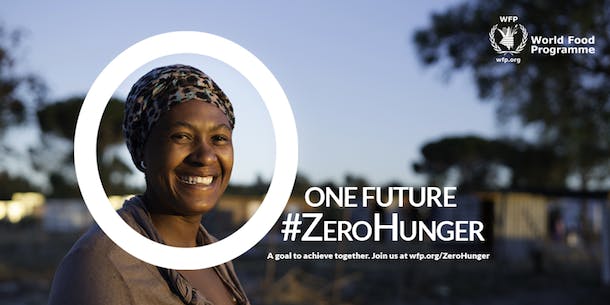Editor’s Note: In honor of World Food Day, we are sharing a guest post from the World Food Programme (WFP), which is working with partners to achieve zero hunger by 2030 as part of the new global goals for sustainable development.

Since benefiting from WFP food assistance, Ecuadorian schoolgirl Melany Cuasque is optimistic about what the future holds. No longer going home hungry, she’s able to concentrate on succeeding at school, paving the way for a bright future.
At Vasco Nuñez de Balboa School, 7th grader Melany Cuasque tells me she knows what hunger is because she has experienced it at home. Melany belongs to the Caranqui indigenous community that has lived in these lands long before the discovery of America.
The community of El Abra where she lives is located in northern Ecuador, a region where WFP provides food assistance to Colombian refugees and vulnerable Ecuadorian families from the host communities.
Local produce
On weekdays, Melany does not go home hungry because she eats lunch at school, prepared with fresh, locally-grown products provided by local farmers. This complements the breakfast she receives from the national school feeding programme.
WFP works with associations to ensure the food provision for several schools, and designs the menus with the school staff and parents. Once delivered, the school staff validates the quantity and quality of the products brought by the small farmers.
In the school kitchen, parents take turns to cook nutritious foods from fruits and vegetables brought to the school every Monday morning for the week’s lunch menus. Like the students and parents, the farmers are also members of indigenous communities.
Finally, WFP and the local government pay the small farmer associations for their products.
Feeding success
Thanks to donors’ contributions to WFP, the students at Vasco Nunez de Balboa are able to eat foods they have never tasted before, such as broccoli, and have a more varied diet than if they just ate at home. Fresh, healthy foods help keep malnutrition at a distance and allow children like Melany to succeed in school. This food is a means for Melany’s own ends.
A bright future
She shows me how she can play traditional songs of her people with her melodica. But Melany’s interests are not necessarily musical for the future. In the year 2030, Melany will be 26. I asked her what she thinks she will be doing then. For her, the future has to do with science. “I want to finish school, go on to University, and then have my career,” she says. “I have always liked science. In 15 years I will be investigating, for example, things that we don’t even know about today.” Maybe a new type of vaccine?
You can help us end hunger
Stories like Melany’s show what can be achieved when we unite to fight hunger. You can help build a brighter future for schoolchildren like Melany. Join Generation Zero Hunger and be part of the movement that brings an end to hunger by 2030.
By Gabriela Malo, World Food Programme



 View All Blog Posts
View All Blog Posts